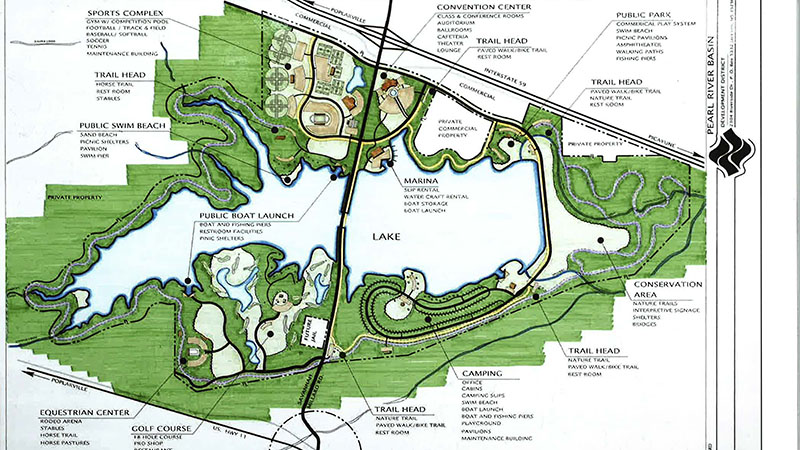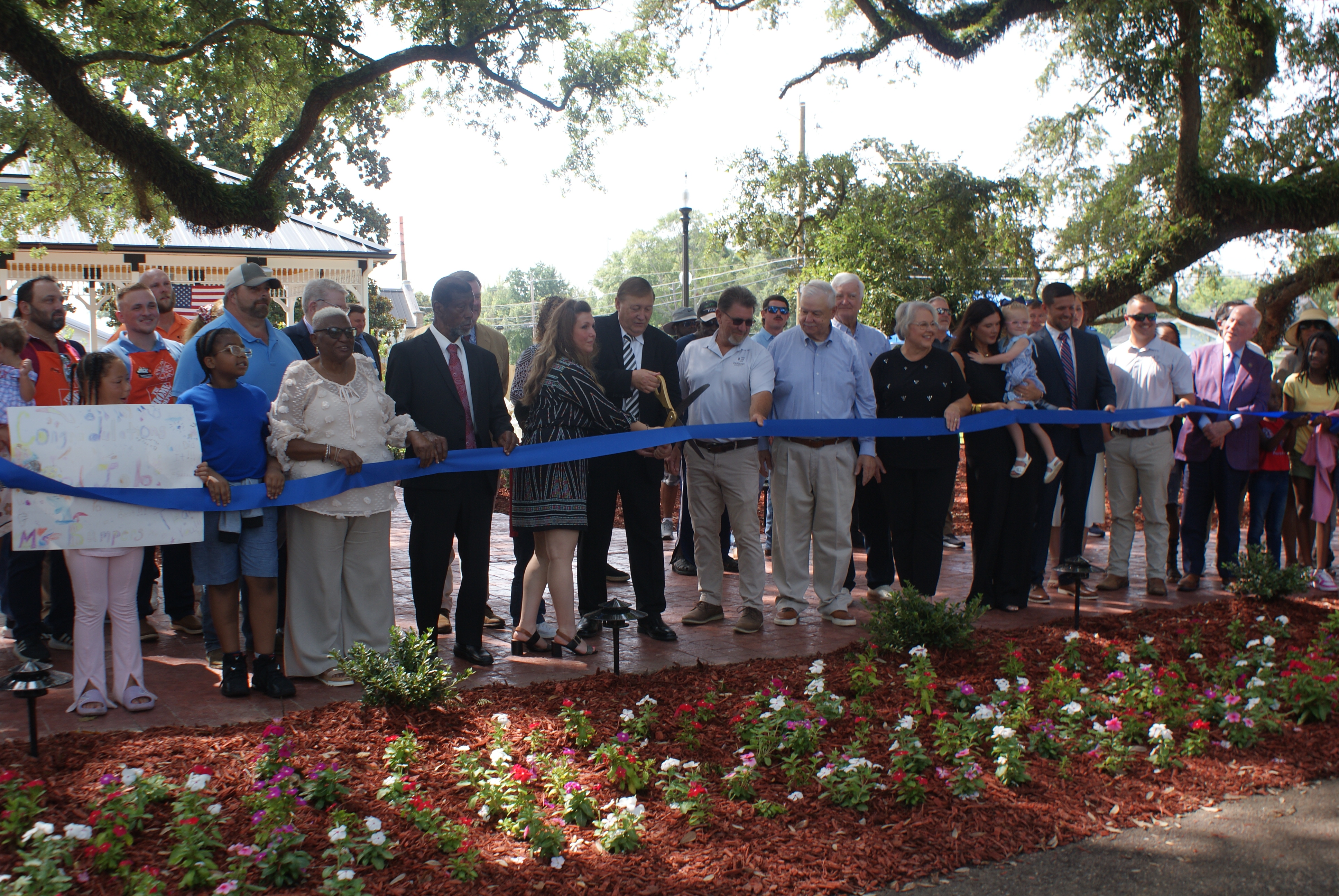Economic impact study might move lake project forward after 20 years
Published 2:44 pm Friday, March 19, 2021

- A proposed design for a recreational lake in Pearl River County from 2003. The proposed publicly owned recreational lake has been discussed by county government for 20 years.
Pearl River County’s governing body has been discussing building a publicly owned recreational lake for 20 years. A new economic impact study may finally move the project past the idea phase.
The proposed recreational lake would be approximately 875 acres off of I-59 on Savannah Millard Road.
County Administrator Adrain Lumpkin started working for the county in 2001, and according to him the lake proposal started after the election of 2000.
There were some studies performed on the idea as far back as the late 70s and 80s, he said, but enthusiasm picked up for the idea around 2000.
The Pearl River County Board of Supervisors worked with the Pearl River Basin Development District on a conceptual plan and with Dungan Engineering on a lake design.
“The Board was anxious about it and excited about it, so we just kept trying to work it forward and work it forward,” said Lumpkin.
The Board of Supervisors conducted several environmental studies and met with state and federal officials. But to build a lake the county needs a permit from the Corps of Engineers, but the county’s permit application was never approved.
Lumpkin believes the new economic and fiscal impact study might be the key to getting a new permit application approved.
“It’s easy to say, ‘I think this would be beneficial to the county,’ but when you actually have a valid study that says if this is built this is what you can project….I think this will give us more light on it and the needed spark to try to keep it going.”
The study was created by the University of Southern Mississippi, Trent Lott National Center for Excellence in Economic Development and Entrepreneurship. The study examines the potential economic benefits of the proposed lake by comparing visitor spending at a similar existing lake and looks at what amenities are important to stakeholders in the area. The study estimates visitors to the lake could spend $3.7 million to $5.6 million annually, bringing new income and tax revenue into the county. It also estimates that camping fees alone could fund the lake’s operational budget.
The study changed Board President Sandy Kane Smith’s perspective on the project.
“I think it helps a lot because it opened my eyes,” said Smith. “Before it was perceived to be just an extra water source for the county and that didn’t really attract me either. By me seeing the economic impact (to) the county made me more into the project.”
Smith thinks a recreational lake could be another amenity that encourages large businesses to relocate to the county.
If the Corps grants a permit, there would still be many steps to making the proposed lake a reality. The Corps would hold a public notice period, allowing the public to comment on the plan. The county would then need to address those comments and address how the project could impact the natural environment, said Lumpkin.
The proposed location includes wetlands, so the Supervisors would need to create a plan to mitigate the destruction of those wetlands.
“Any time that you destroy wetlands, you’ve got to replace them,” Lumpkin said.
The process of mitigating wetlands entails purchasing wetland credits or creating a natural preserve for other wetlands.
If the county were granted a permit, it would move to the next phase of acquiring land, before finally proceeding to construction.
Lumpkin believes securing funding for the project would be very achievable if the county is given a permit. He said the lake would cost an estimated $10 million to build. Previous funding sources have been available through the years, he said, but funding cannot be secured without a permit.
The lake would be located on the same road as the county jail, but Lumpkin does not foresee that being an issue since county or municipal jails are often located within cities near other businesses.
“I think it would be a game changer for Pearl River County if we were successful and were able to get the lake constructed. Tourism is a big draw,” Lumpkin said.





